Stories from the Gardens
Welcome

Hello, there. I’m a botanist! Welcome to my garden. Isn’t it just wonderful?! I’m one of Hans Christian Andersen’s paper cuts; I’ve popped out of his imagination along with the stories. It’s me who look after the garden and I know EVERYTHING there is to know about the plants. I know all their stories. And their secrets.
Hans Christian Andersen loved nature very much, well, he used to say that nature whispered stories to him. We’ll try to look at nature as he did. I’m going to take you round the gardens and show you some of the special places.
There are four symbols on the map – you’ll find them in the gardens on small signposts. Select on the map where you want to start. Once you have found a signpost, scan the QR code and listen to the story. Turn the map over; at each location there is a question to discuss and a game to play.
Just one last thing: we’re not allowed to stray from the paths or pick the flowers and plants. They don’t like it, you see. And we so want our plants in these gardens to be happy. Be seeing you. Have a wonderful tour.
The Giants’ Garden
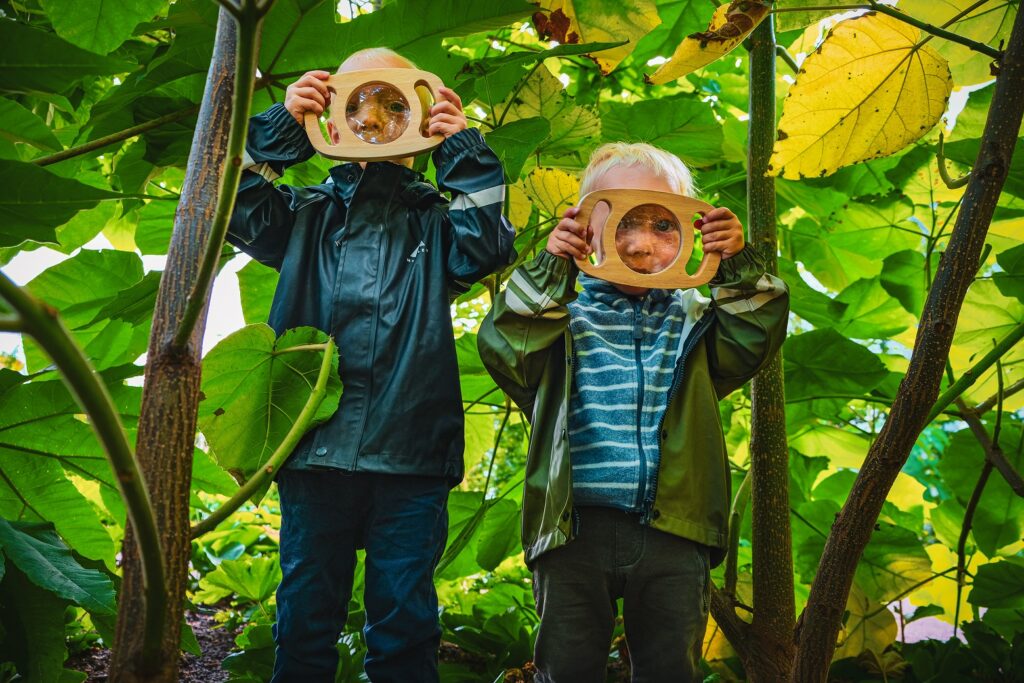
All plants have their own story to tell, as inside every flower there lives a little soul – according to Hans Christian Andersen. Now and again, we find that someone lives inside the flowers. Perhaps you’ve heard of Thumbelina. Exactly! She was born inside a flower, and she was just one inch tall. Look at your thumb; that’s how small she was. And she lived in this, our giant world.
Here, in The Giants’ Garden, we’re just as small as Thumbelina. She used a lily pad for a boat and slept underneath a dock leaf. But when winter came, all the birds that used to sing to her so beautifully flew off. She was so dreadfully cold. A lot more things happened, but the story ends happily, I’m glad to say. Thumbelina meets a swallow and flies with him to warmer countries. The swallow is elegant – wearing a tie and tailcoat. He’s a migratory bird – loves travelling. Perhaps the swallow is a picture of Andersen himself. His father said to him when he was boy, ’Travel! Travel and experience the world!’ And Andersen did – just like the swallow.
But tell me this: if you could fly with the swallow – where would you go?
The Dark Garden
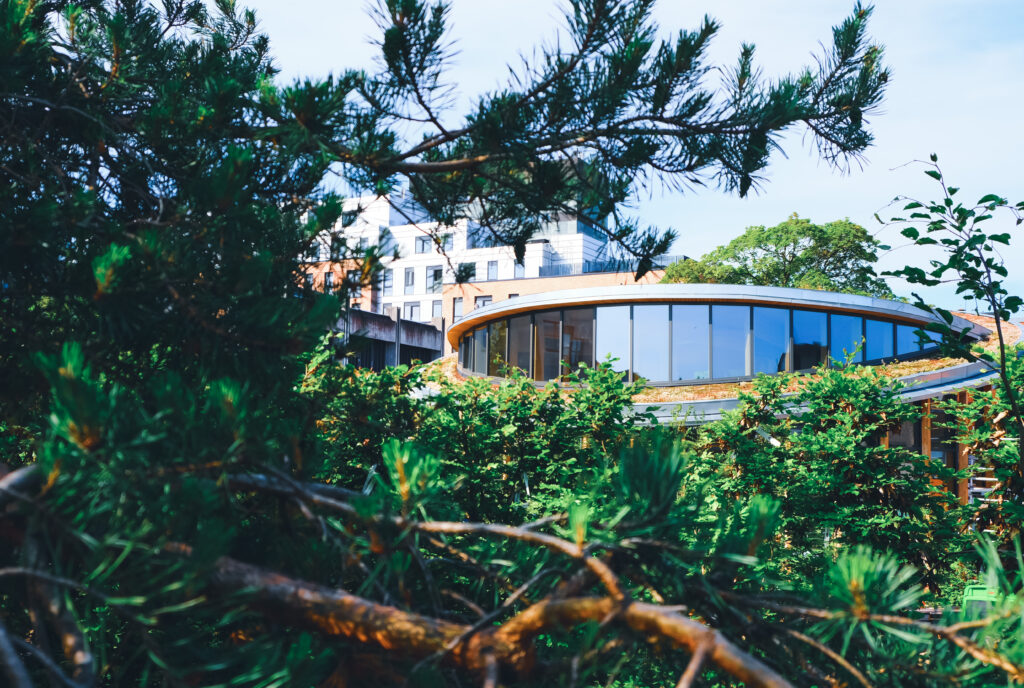
We’ve now come to The Dark Garden. Up here, it’s darker and a little gloomier, as Hans Christian Andersen also knew how to tell those kinds of stories. He did not only write about bright and easy things but also about darker things. Sadness and gloom are part of life, too.
Andersen wrote a fairy tale about a small flower – the mayweed. It grew in the grass just outside a garden with attractive, glorious flowers. The tulips and peonies knew well enough that they were nice. Outside the beautiful garden, the grass was allowed to grow and there, in the tall grass, was the mayweed; a small flower with white petals and a yellow centre. The small mayweed was poor, nobody noticed it, but it didn’t know that. It was happy and the sun was shining down on it. The fairy tale about the mayweed did not end happily. The lark that sang for the little flower was caught by two boys and died of thirst. And the mayweed was uprooted and thrown in the dusty road. Yes, Andersen also wrote stories that were not bright and beautiful, about people who did not understand nature. Do you think a story can be good even when it’s sad?
I prefer bright and happy colours, myself. Just look at the way the trees hang their heads here?! Perhaps they hang their heads for a good reason. Listen! Perhaps you can hear the trees talk?
The Bright Garden
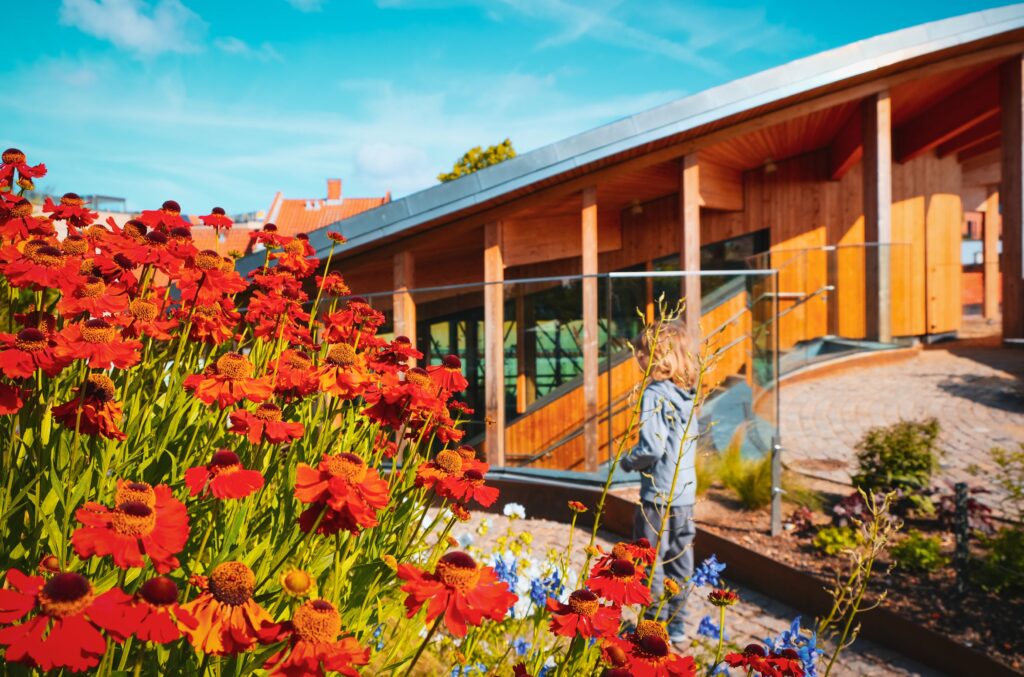
We’re now in The Bright Garden. Aaaah! How lovely it is here, don’t you think? If you like light, of course. Although it’s lovely and bright in The Bright Garden, I’m going to tell you a sort of dark story. Well, a story about death.
The Emperor of China had been taken ill. ‘The living nightingale on the branch outside had heard that the Emperor had become ill and had come to sing to him. While it was singing, the Emperor felt better and better. Death was also listening and said, “Carry on, little nightingale! Don’t stop!” The nightingale carried on singing, and it sang about the quiet churchyard, where the white roses grow, where there’s a scent of elderflowers, and where the lush grass is watered by tears. Now Death began to miss his garden, and so floated, like a cold white fog, out of the window. “Thank you so much!” said the Emperor, “you heavenly little bird”.’
The nightingale could make death disappear. It sings to all our senses at the same time. Our senses are the faculties we use when we listen, see, taste, smell, and feel. When the nightingale sang, Death could actually see the white roses, smell the elderflowers, taste and feel the wet grass and hear the nightingale sing. The Bright Garden has something for all our senses, too. That’s why it’s my favourite spot in nature. What’s yours?
The Light Tree
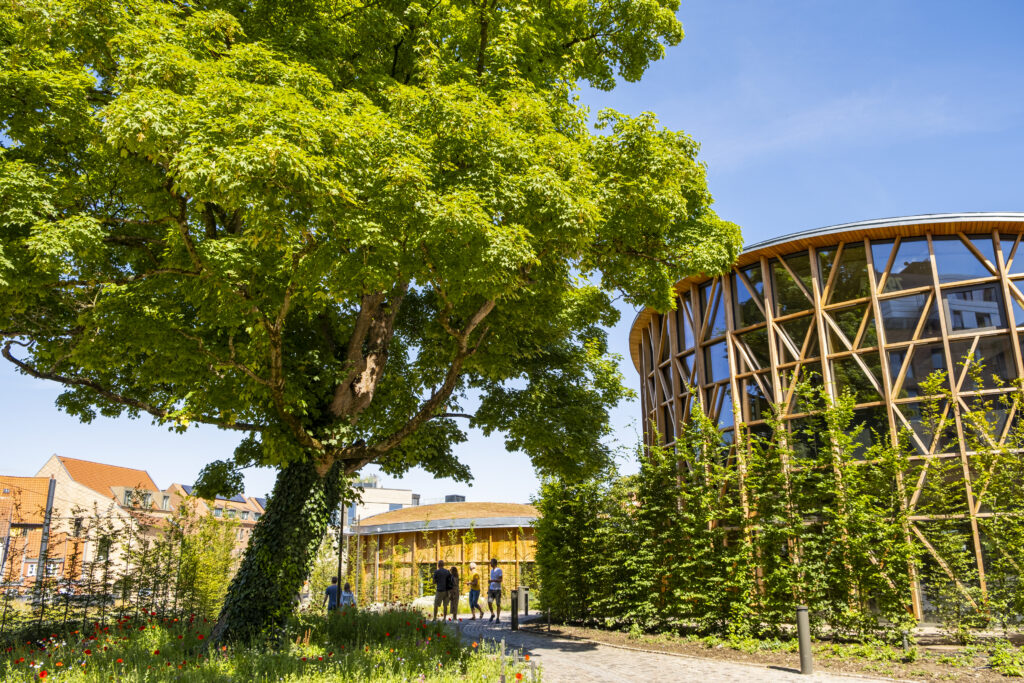
This is the garden’s oldest inhabitant. This maple has stood here for many years. What it must have seen! We call it the Light Tree because, once, it was hung with thousands of brilliant lightbulbs. Just like a starry sky. Hans Christian Andersen wrote a lot about trees. Mostly because they’re old and have experienced so much. And remember everything!
‘There, alone on the hill stands a beech tree;
His finest branches chopped off, but see!
The poor chap’s top seems to strangely shake;
He’s telling tales of times past, of heartache
Of lovers and the kind of life he’s led,
Just listen! — if only we knew what’s being said!’
Old tree like this feels different about time than people do. ‘We’re awake in the daytime, asleep at night when we dream; with a tree it’s different, a tree is awake for three seasons on the trot and does not sleep until winter. Winter is its sleeping time, its night after a long day of spring, summer, and autumn’. Trees and nature change as the seasons pass. Which season do you like best?
Farewell
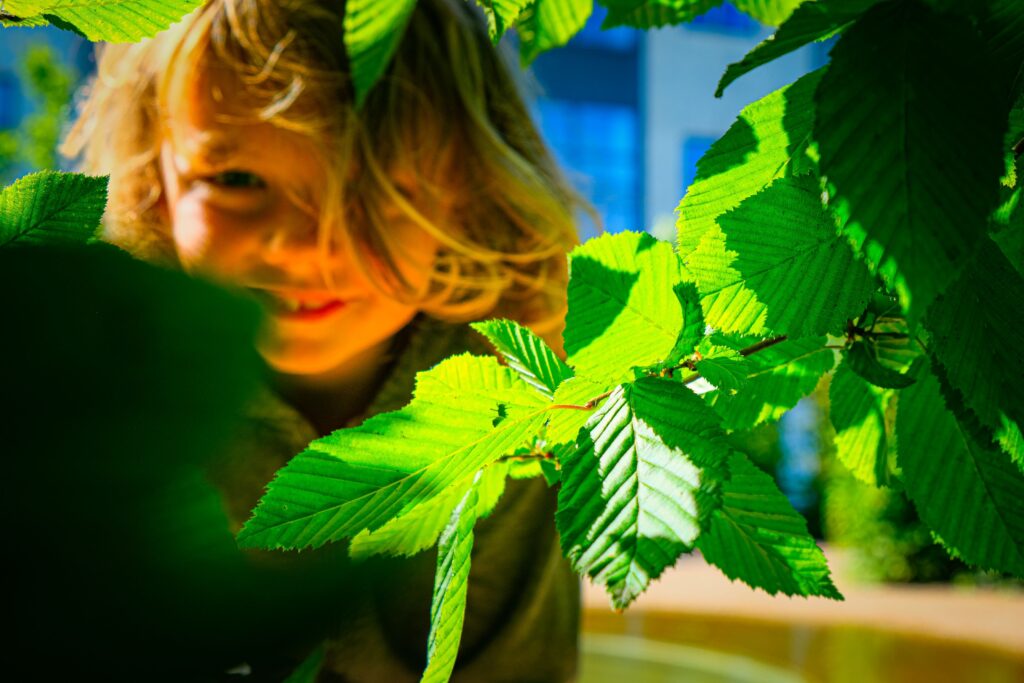
You’ve now seen some of the garden. You’re very welcome to explore the rest. I won’t be joining you, though! I’ve got so much work to do. But now you’ve finished with the map, try using it for something else: it will fold into a cootie catcher to take home with you. Then you can go and explore somewhere else. The games can be played everywhere in nature. Hans Christian Andersen liked it when things turned out to be something else than they really were. For example, that life is a fairy tale.
The project ”Stories from the Gardens” is made possible with support from the Danish Board of Business Development.

